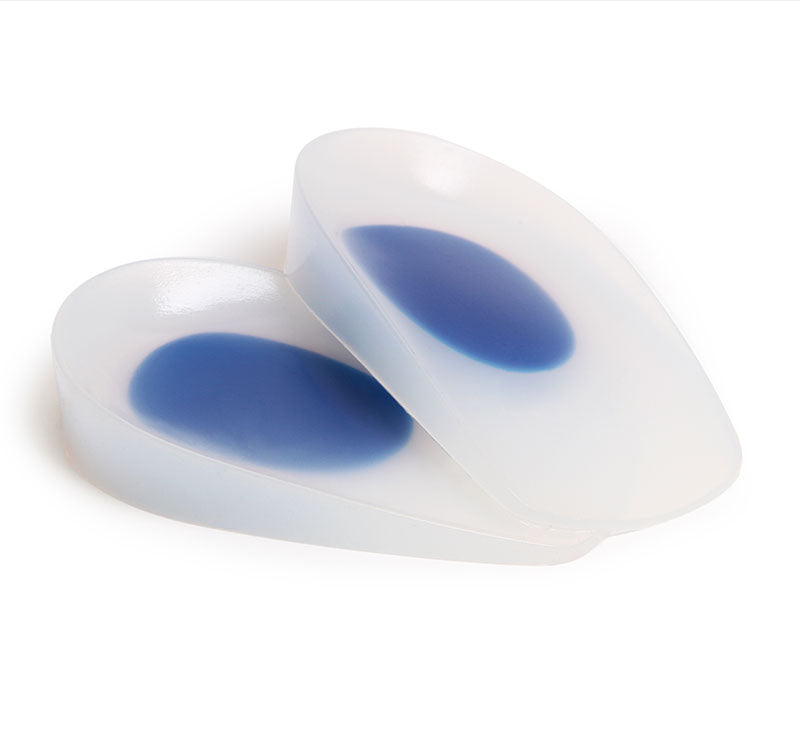
Heel Cups Explained (What They Are & How to Use Them) | Protalus
Share
What are heel cups?
Many people who suffer from foot pain, especially pain caused by plantar fasciitis, seek out a simple fix that will allow them to keep going about their daily routine without spending too much money. One of the most common products that people pick up is a pair of heel cups or heel cup inserts. A heel cup looks a bit like a shoe insert that only covers the heel. It is typically made of plastic, sometimes with a gel core, and comes in varying thicknesses with different built-in inclines to offer added shock absorption and heel support. These inserts are designed to fit under the heel bone and are often used to provide relief from various types of discomfort such as heel spurs, Sever's disease, and Achilles tendonitis.
Heel cups are relatively cheap, easy to use, and often sold in one-size-fits-all options. You can buy them in most pharmacies, and they just go right over your heels in your shoes. Typically, you don’t need to trim or reshape them, making them a simple and convenient product. They can be worn in work boots, athletic shoes, or even soccer cleats, and some people even wear them with socks for extra cushioning. In studies, heel cups have been shown to absorb shock, maximize impact reduction, and add a bit of lift to the heel, helping with knee pain, shin splints, or when standing for long periods.

Do they work for plantar fasciitis?
Unfortunately as with most quick and easy fixes, heel cups alone have been shown to be ineffective for pain caused by plantar fasciitis. Plantar fasciitis is a condition where the plantar fascia, or the band of tissue that runs along the bottom of the foot, becomes strained and inflamed. This causes pain often located in the heel, but it's not due to a lack of cushioning.
Adding heel cushions or gel heel cups doesn’t solve the root issue because the pain stems from the arch and the way your feet distribute pressure, not just from the heel itself. Approaches that relieve stress on the plantar fascia—like orthotics or full-length insoles with arch support—are much more effective. These can help correct foot alignment, reduce pressure points, and prevent the heel from taking excessive strain. In more severe cases, surgery may be needed to address chronic heel pain.

What are they best for?
If you’re not looking to treat plantar fasciitis specifically, heel cup inserts still have their place and can address heel pain relief. For those who are constantly on their feet, whether it’s walking, standing, or performing high-impact activities, heel cups can provide relief by increasing shock absorption and offering added comfort. They are especially helpful for athletic performance, long shifts, or reducing strain in children with Sever’s disease or adults with flat feet.
Heel cups may also benefit people experiencing heel discomfort from heel spurs, minor injuries, or the need for shock-absorbing properties in their footwear. Many users report that using heel cups makes a noticeable difference, especially when paired with supportive shoes and properly sized inserts. Some styles are FSA-eligible and come with a money-back guarantee if they don’t meet expectations.
Whether you're looking to prevent pain, elevate comfort, or simply add a layer of protection under your heels, a good pair of heel cushions can be a helpful addition to your routine. They’re often designed with durable materials, easy to wear, and come in sizes that fit most shoe sizes—from kids to adults. If you’re unsure which type is right for you, reading a few reviews, or asking a professional for orthotic advice, can make a big difference in your overall experience.